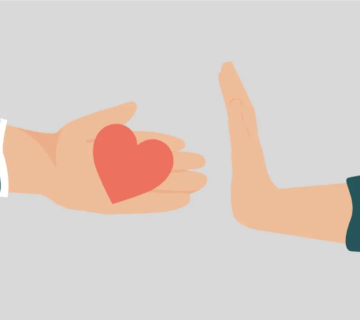Introduction: The Complex Nature of Romantic Turn-Ons
What does it truly mean to be “turned on” in a relationship? While popular culture often reduces this concept to physical attraction alone, the reality is far more nuanced. A turn-on in relationships represents a complex interplay of emotional, psychological, and physical factors that create and sustain attraction between partners.
This in-depth exploration will reveal:
-
The science behind what makes someone a turn-on
-
How turn-ons evolve through different relationship stages
-
Gender differences in attraction triggers
-
Why some turn-ons fade and how to revive them
-
Practical ways to maintain mutual attraction long-term
Understanding these dynamics can transform how you approach intimacy and connection in your relationship.
Defining Turn-Ons in Modern Relationships
What Does “Turned On” Mean in a Relationship Context?
Being turned on encompasses:
✔ Physical arousal – Sexual chemistry and attraction
✔ Emotional resonance – Feeling deeply understood
✔ Psychological connection – Shared values and worldviews
✔ Spiritual alignment – Sense of profound belonging
The 4 Dimensions of Relationship Turn-Ons
-
Biological Turn-Ons
-
Physical appearance
-
Body language
-
Scent and pheromones
-
-
Emotional Turn-Ons
-
Vulnerability
-
Empathetic listening
-
Emotional availability
-
Shared laughter
-
-
Intellectual Turn-Ons
-
Stimulating conversations
-
Shared curiosity
-
Mental challenges
-
Creative collaboration
-
-
Spiritual Turn-Ons
-
Shared purpose
-
Aligned values
-
Mutual growth
-
Transcendent experiences
-
The Neuroscience of Attraction
How the Brain Processes Turn-Ons
Recent fMRI studies reveal:
-
The ventral tegmental area releases dopamine during attraction
-
Oxytocin strengthens emotional bonding
-
Serotonin levels affect obsession in early relationships
The Role of Novelty
Novel experiences activate the brain’s reward system more powerfully than routine interactions, explaining why new relationships feel more exciting.
Gender Differences in Turn-Ons
What Turns Women On in Relationships?
Research from the Kinsey Institute shows:
-
89% value emotional connection over physical traits
-
76% cite thoughtfulness as a major turn-on
-
68% are attracted to partners who support their goals
-
62% find intellectual stimulation arousing
What Turns Men On in Relationships?
Studies indicate men prioritize:
-
Physical intimacy (82%)
-
Feeling appreciated (78%)
-
Shared activities (71%)
-
Playfulness (65%)
Why Turn-Ons Change Over Time
The 5 Stages of Relationship Attraction
-
Infatuation Stage (0-6 months)
-
Intense physical attraction
-
Idealization of partner
-
High dopamine levels
-
-
Building Stage (6 months-2 years)
-
Deepening emotional connection
-
Discovering shared values
-
Oxytocin bonding increases
-
-
Commitment Stage (2-5 years)
-
Security becomes important
-
Routine sets in
-
Novelty decreases
-
-
Collaboration Stage (5-10 years)
-
Shared life building
-
Parenting challenges
-
Career pressures
-
-
Reinvention Stage (10+ years)
-
Rediscovering each other
-
Creating new shared meaning
-
Conscious relationship work
-
Maintaining Turn-Ons Long-Term
The Gottman Institute’s Magic Ratio
Thriving couples maintain:
-
5 positive interactions for every 1 negative
-
Regular expressions of appreciation
-
Daily small connections
Practical Strategies to Sustain Attraction
-
Novelty Injections
-
Try new activities together monthly
-
Travel to unfamiliar places
-
Learn new skills as a couple
-
-
Appreciation Practices
-
Daily specific compliments
-
Gratitude journals
-
Surprise appreciation notes
-
-
Technology Boundaries
-
Device-free meals
-
No phones in bedroom
-
Dedicated quality time
-
-
Physical Connection Rituals
-
6-second kisses
-
20-second hugs
-
Non-sexual touch
-
-
Growth Orientation
-
Shared learning goals
-
Relationship check-ins
-
Couples workshops
-
When Turn-Ons Become Turn-Offs
Warning Signs of Fading Attraction
-
Decreased physical intimacy
-
Avoidance of quality time
-
Increased criticism
-
Emotional withdrawal
-
Fantasizing about others
Repairing the Connection
-
Open communication about needs
-
Professional counseling if needed
-
Recreating positive experiences
-
Addressing underlying issues
-
Recommitting to the relationship
Read More: The Ultimate Dating Advice for 27-Year-Olds in 2025
Conclusion: Cultivating Conscious Turn-Ons
Understanding the true meaning of turn-ons in relationships allows couples to move beyond superficial attraction and build lasting, multidimensional connections. By recognizing that attraction requires ongoing cultivation, partners can create relationships that deepen rather than diminish over time.
The most fulfilling relationships view turn-ons not as static qualities, but as dynamic processes that evolve through intentional nurturing. Through conscious attention, appreciation, and shared growth, couples can maintain the magnetic pull that first brought them together while building something even more meaningful.
For more research-backed relationship insights, visit The American Psychological Association’s relationship resources.




[…] Read More: Turn On Meaning in Relationship: The Psychology Behind Lasting Attraction […]